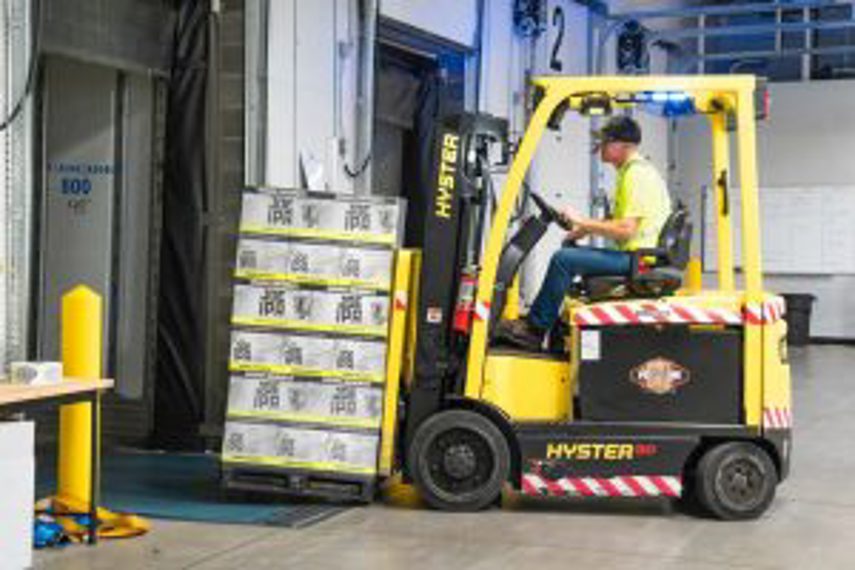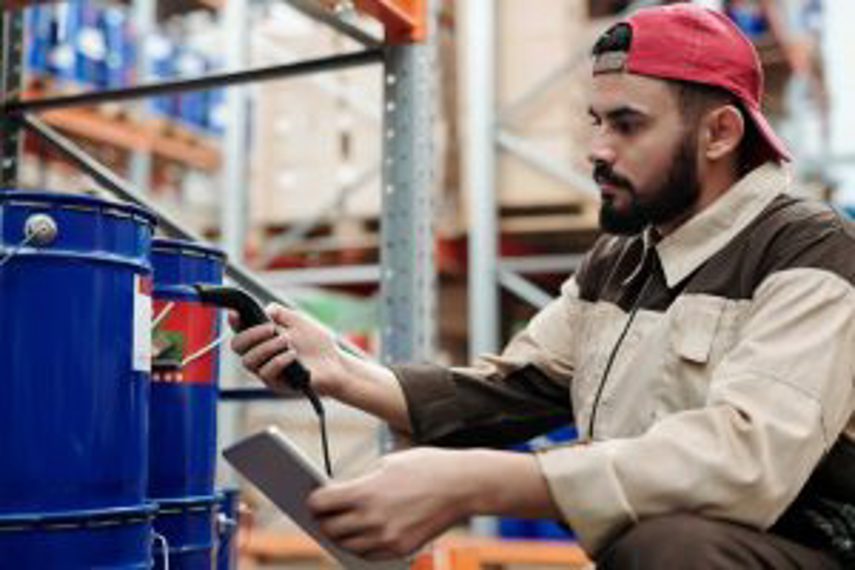
2022 brought more disruption and change than anyone could have expected, with much of Europe reeling from events in Ukraine – and supply chains further rattled.
Best practice inventory management – and the wider world of supply chain management – has played a big part in business survival in these disrupted years – and what constitutes best practice has changed too.
Here’s our pick of the 10 most important inventory management trends of 2024.
Just in Time becoming Just in Case
Research by Unleashed has revealed that the volume of stock held by manufacturers has doubled, without overall business activity rising in step. The data compared stock on hand values and quantities from Q3 2019 with Q3 2022.
This appears to signal a shift towards holding a greater quantity of safety stock as a strategy to circumvent disruption within the global supply chain caused by Brexit difficulties and – more recently – Russian military action in Ukraine.
The study looked at over 5000 businesses across Australia, New Zealand, and the UK. The results have led many experts to call this phenomenon an 'inventory crisis'. The sector with the greatest change of all three countries was New Zealand's Sports & Entertainment industry, where average stock-on-hand value increased by 359%.
As supply chain disruptions, worker strikes, and inflation continue to shake the globe, we're predicting a continued commitment to Just in Time strategies from manufacturers worldwide.
Cloud technology accelerates
Cloud technology is nothing new anymore, but as the technology continues to grow and becomes increasingly easy to set up and use, its adoption rates keep climbing. Global spending on cloud services grew from US$332 billion (2021) to $490.3 billion (2022) and is expected to reach $591.8 billion in 2023.
For manufacturers and other organisations looking to improve their inventory management processes, cloud technology represents a major opportunity – especially when it comes to remote working.
The benefits of cloud technology for inventory management
By signing up to a cloud service provider, you gain access to new computing power, data storage and smart technology functions that can be set up in minutes and don’t require costly on-premise hardware. Cloud services also:
- Eliminate data silos by connecting disparate business functions (e.g. accounting, inventory, customer service) to a central database.
- Easily connect high-value tools that utilise new data capabilities, like ERP, inventory management for manufacturers, smart accounting software, CRM, etc.
- Set up new services and scale up or down based on demand with very little extra cost (little to no on-premise hardware is required)
And in terms of inventory management the cloud is key to:
- Tracking inventory location and levels in real time, even for remote warehouses
- Accurately plotting costs based on live data
- Managing supplier and other vendor relationships in one place
- Improving efficiencies with data analytics
- Accessing systems and documents anywhere in the world
 Investment in internet-connected systems is expected to return to pre-Covid levels.
Investment in internet-connected systems is expected to return to pre-Covid levels.
More widespread use of multi-warehousing
Multi-warehousing does what it says on the tin: inventory managers store goods in distributed warehouses across the region, country, world (whichever is relevant), while still monitoring and managing the business from a central location. Customers and suppliers have a single point of contact – while materials are stored closer to where they’re needed, at lower cost.
A multi-warehousing strategy is only realistically possible for businesses that invest in smart cloud technology, like inventory management software.
This is because in order to keep the organisation running smoothly and give customers or suppliers that central point of contact without causing severe delays, each node in the organisation’s logistics and warehousing network must be able to communicate in real time.
The benefits of multiple warehouses
- Faster shipping: By operating multiple warehouses, you can keep your stock closer to customers than were you to operate just a central warehouse. This means faster shipping times, and lower transport costs.
- Reduced carbon footprint: Cutting your freight times doesn’t just save money, it lowers your impact on the environment too.
- Easier to scale and grow: Once you’re set up with a network of warehouses, it’s relatively easy to add a new location to the system. That opens the potential for further business growth.
- Spread your risk: Covid lockdowns, fires, floods and even political unrest are a constant risk for organisations with a single warehouse. But when you have more than one warehouse, it’s less likely that a single disaster or problem will wipe them all out - meaning other warehouses can pick up the slack if one runs into trouble.
Shipping from multiple warehouses with Unleashed Software video:
 3PLs are becoming a more attractive option for more businesses.
3PLs are becoming a more attractive option for more businesses.
More widespread third-party logistics
For growing businesses the cost of operating warehouses and owning vehicles can be limiting – so for SMEs in particular third-party logistics (3PL) are an attractive solution.
Technology such as cloud software and IoT has made 3PL a more appealing offer in recent years, leading to strong growth in this sector.
Indeed, the 3PL industry is projected to grow at a CAGR of 7.1% through 2027 (Allied Market Research).
Where once it might have been tricky to rely on third parties for vital logistical functions, now real-time communication, inventory tracking and data sharing have made it easier for different businesses to work together with no loss in service quality or delivery times.
Using software platforms such as Mintsoft, for example, 3PLs can quickly and efficiently fulfil on behalf of clients while keeping their branding experience intact – and their reporting up to date.
The benefits of 3PL for SMEs
- Cut costs: As specialist providers, 3PL companies often have good relationships with freight companies and can find ways to make deals or trim costs, which they can pass on to you.
- Take advantage of opportunities: Moving into a new market is a risk. Any costs you can cut from that experience makes it easier to dip your toes in without fully committing.
- Easier to scale up or down: Your needs may change throughout the seasons. Using a third party means you could add or subtract services as required.
- Access expertise: Partnering with logistics experts means accessing their expertise and experience without having to generate your own.
Inventory Analytics
Data analytics generally requires the use of cloud technology to properly function - if key datasets are held in disparate silos across systems, they can’t be compared with one another and potentially vital information will be lost.
It’s no surprise, then, that as a cloud-based technology BI is growing, with its market size expected to reach US$18 billion by 2025 (up from $15.2 billion in 2020, according to Statista).
It’s also a trend that has reached the world of inventory management. With a digitised supply chain, and managers connected to the metrics that matter, companies are now able to access screeds of business-critical data that was previously unavailable.
Being able to track figures like product margins by warehouse, or production waste by location – and all in real time – empowers managers to make better decisions, faster.
- Read more: The 10 Procurement Metrics that Matter
Inventory forecasting
Being able to predict the future means being able to plan for the peaks and troughs of your business. This is why inventory forecasting is getting more popular, as smart technology (such as data analytics) enables smarter purchasing decisions.
What does inventory forecasting look like?
Forecasting is a mixture of maths and experience, being able to look at the data in front of you and combine it with your own knowledge of the industry, and research, to guess what is going to happen next.
Getting good at forecasting requires smart business intelligence, which is why you will generally always need a BI solution before you can get into predictive analytics. This is because the more data you can combine, and the more history you have to work with, the better you’ll be able to determine the most likely next step.
Inventory forecasting in use
Quantitative analysis of historical data is a common way to predict the future.
What peaks and troughs occur in customer demand each year? What products were popular, and at what time? Additionally, why do you think these changes occurred, and are they likely to occur again?
If you can see where spikes are likely to occur, you can pre-emptively order the right materials or stock to ensure you can meet demand without stocking out.
Likewise, if you know when troughs are more common, you can avoid over-purchasing goods - especially goods that might spoil - to trim costs and reduce wastage.
 Warehouse automation – both software and hardware-based – is becoming more affordable.
Warehouse automation – both software and hardware-based – is becoming more affordable.
Warehouse automation
Warehouse robots, co-bots and autonomous vehicles are becoming the norm rather than the exception in larger warehouses, raising efficiency in these traditionally labour-dependent environments – and improving worker safety.
Less glamorous, but potentially more cost-effective, are the warehouse management software systems working alongside them. Advanced location tracking features and live capacity tracking for shelves are helping keep warehouse costs down – and fulfilment times low.
Connected omnichannel services
One of the big trends of the last decade, which will only increase in 2024, is the concept of omnichannel customer service - that is, providing customers with a variety of channels to choose from to purchase goods.
Customers are increasingly expecting a full and consistent shopping experience across the web, social media, apps and in-store – and this goes beyond the purchase point into deliveries, returns and post-sales service as well.
Omnichannel requires a highly connected system
We’ve talked about real-time communication before in this article, and here again it’s vital. From suppliers to manufacturers to logistics and retailers, everyone in the supply chain must be connected and talking to each other for a customer to receive an omnichannel experience.
For instance, customers should be able to go online to look at price and stock levels at the store of their choosing, then travel to that store and see that the online data was accurate. This sounds simple, but it means a few different systems must be communicating in real time, and the system must be updated as that information changes.
This requires the coordination of factors such as:
- Inventory reconciliation
- Supplier management
- Demand planning
- Distribution and logistics tracking
Managing these tasks requires a system with a comprehensive suite of inventory management software features.
Sustainable supply chains
Sustainability is a key concern for consumers. Research conducted by Wunderman Thompson revealed that 83% of consumers will always choose a brand with a better sustainability record. And although 90% of business leaders think sustainability is important, only 60% of businesses have a sustainability strategy in place.
So, how green is your supply chain?
Think about how goods are shipped to and from your warehouse. Transportation is a huge contributor to global greenhouse gases, so any steps you can take to reduce your impact on the environment could start here. Some ideas to consider:
- Switching to an electric, or more fuel efficient, fleet.
- Using multiple smaller warehouses to get stock closer to customers.
- Using a 3PL provider that specialise in green logistics.
- Consider if your organisation could switch to a circular supply chain.
Circular supply chain? This is where, instead of goods moving through the supply chain and ending with disposal, as many materials as possible are recycled back into the manufacturing process - cutting costs, trimming waste, and reducing a company's carbon footprint.
A great example of a business successfully running a circular supply chain is Sydney-based coffee roaster Kua Coffee. Kua uses Unleashed software to serial number track all of its reusable packaging, checking it in and out of their warehouse as part of their zero waste approach to business.
More resilient supply chains
Since the start of the Covid-19 pandemic many businesses have learned their supply chain is not as resilient as they thought. With restrictions on the movement of people and global trade, getting the right goods to the right place at the right time has proved a challenge.
We anticipate that supply chain resilience will be a continuing theme throughout 2024, as organisations work their way through rising costs and extra disruptions.
Tips to consider when building supply chain resilience
- Have you mapped out all of your supply chain? Thinking beyond tier 1 and 2 suppliers, but to the entire chain - right up and down. Who is present, what are they at risk of and what risks could they pose to your organisation
- Find alternative suppliers and perhaps negotiate deals so you can start to think more flexibly - able to respond rapidly to a change anywhere in the chain.
- Think about near-shoring - are there local alternatives to your current suppliers who might pose less of risk in the short and mid-term? Local suppliers can also help with building your green credentials, as they will cut your freight needs.
Don’t forget your digital supply chain
Supply chains aren’t just physical anymore – they’re also digital. What software do you use? Who owns it? Is it a cloud-based service? Who is updating it and maintaining its security?
Cyber security should be a concern of all organisations concerned about digital supply chain resilience. As you map out the physical supply chain, consider also your business software – think about any risks to those vendors, how reliant you are on their technology, and which services pose the least risk.
